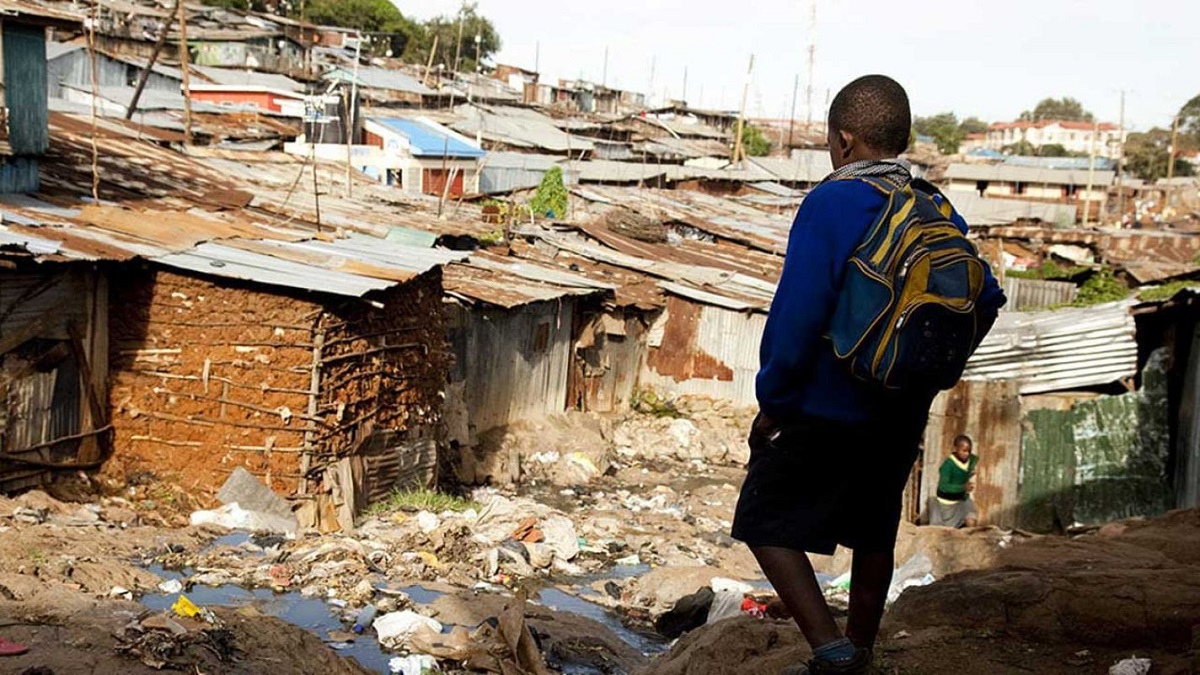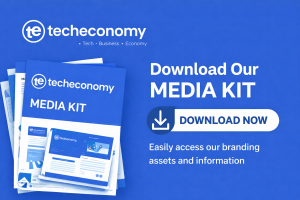In the global pursuit of sustainable development, the interconnected challenges of poverty eradication and green investment have emerged as critical priorities for governments and societies worldwide.
The debate around poverty alleviation and environmental sustainability has led to a growing recognition of the potential synergies and solutions that can be harnessed when these agendas are integrated.
By addressing social inequalities, promoting economic opportunities, and safeguarding the environment, nations have the opportunity to create holistic pathways towards inclusive growth and climate resilience.
This piece explores how the intersection of poverty eradication and green investment can offer solution synergies, with examples of nations succeeding in leveraging these synergies to achieve sustainable development outcomes.

In the face of persistent global poverty, exacerbated by a lack of leadership and systemic challenges, the need for effective poverty alleviation strategies remains paramount.
In an increasingly digital age, the conversation around addressing poverty has evolved to incorporate innovative solutions and approaches.
This discourse delves into the key issues, thought processes, and sustainable solutions that can effectively tackle poverty in the modern era.
Indeed, poverty has presented a complex pathway to define itself. Is a complex and multifaceted issue that continues to plague nations around the world.
Despite advancements in technology and increased access to information, poverty remains a pervasive problem that requires a concerted effort from both government and non-governmental organizations to address.
In the digital age, several factors perpetuate poverty, including lack of access to education, healthcare, and basic infrastructure.
With the increasing reliance on technology and digital platforms, those living in poverty are often left behind due to the lack of access to these resources. This digital divide only serves to exacerbate existing inequalities and prevent those in poverty from accessing opportunities for socio-economic advancement.
In terms of handling poverty in the digital age, it is important to consider the thought processes that drive decision-making and policy formulation.
Often, there is a lack of political will or leadership to address the root causes of poverty and implement sustainable solutions. Without a comprehensive and integrated approach that addresses the multiple dimensions of poverty, progress will be limited.
One potential solution to addressing poverty in the digital age is to leverage technology and innovation to create inclusive and sustainable development opportunities.
This could involve initiatives such as mobile banking, digital literacy programs, and e-commerce platforms to empower those living in poverty and provide them with access to essential services and resources.
Additionally, there is a need for increased investment in education and skills training to equip individuals with the tools they need to succeed in a rapidly evolving digital economy.
By prioritizing human capital development and investing in programs that promote financial inclusion and entrepreneurship, nations can begin to address the systemic issues that perpetuate poverty.
Overall, addressing poverty in the digital age requires a collective and coordinated effort from all stakeholders, including governments, non-governmental organizations, and the private sector. By prioritizing sustainable solutions and addressing the underlying causes of poverty, we can work towards creating a more equitable and inclusive society for all.
In the ongoing fight against poverty, the collective efforts of citizens play a crucial role in driving meaningful change and progress.
As we navigate the challenges of the digital age, it is essential to explore ways to effectively galvanize these efforts and amplify the impact of grassroots initiatives in poverty eradication.
This discussion delves into strategies for mobilizing and empowering citizens to work towards a common goal of alleviating poverty and building a more equitable society.
Engaging citizens in the effort to eradicate poverty is crucial for achieving sustainable and lasting change. In the digital age, there are numerous ways to galvanize these efforts and empower individuals to take action against poverty.
Here are some strategies to mobilize citizens in poverty eradication in the digital age:
1. Raise Awareness:
Utilize social media and digital communication channels to raise awareness about the issue of poverty and its impact on individuals and communities.
By sharing stories, statistics, and information about poverty, citizens can become more informed and motivated to take action.
2. Advocate for Change:
Encourage citizens to advocate for policy changes and initiatives that address the root causes of poverty. By organizing online campaigns, petitions, and virtual events, individuals can amplify their voices and push for systemic reforms that promote equality and social justice.
3. Volunteer and Donate:
Provide opportunities for citizens to volunteer their time, skills, and resources to support organizations working to alleviate poverty.
Online platforms can facilitate connections between volunteers and non-profit organizations, making it easier for individuals to get involved in meaningful ways.
4. Participate in Community Building:
Foster a sense of community and solidarity among citizens affected by poverty, as well as those who are in a position to help. Online forums, social networks, and virtual support groups can create spaces for individuals to connect, share experiences, and collaborate on solutions to poverty-related challenges.
5. Support Grassroots Initiatives:
Promote and support grassroots initiatives that empower communities to address poverty from the bottom up. By investing in local projects and initiatives led by community members, citizens can make a direct impact on poverty eradication efforts in their neighbourhoods.
6. Educate and Empower:
Provide citizens with access to educational resources and training programs that equip them with the knowledge and skills needed to advocate for themselves and others.
Online courses, workshops, and seminars on poverty-related topics can empower individuals to become agents of change in their communities.
Essentially, by harnessing the collective power of citizens in the digital age, we can create a more inclusive and equitable society where poverty is no longer a barrier to a fulfilling and dignified life. Through collaboration, advocacy, and mutual support, individuals can drive positive change and contribute to the global effort to eradicate poverty once and for all.
Nonetheless, in response to this request, it is important to comprehensively define poverty by considering all relevant keywords and demographic factors.
By examining the various dimensions and nuances of poverty, including economic, social, and political aspects, we can gain a more holistic understanding of this complex issue.
Additionally, exploring how poverty impacts different demographics and communities will provide valuable insights into the varied experiences and challenges faced by those living in poverty.
Consequently, Poverty can be defined as a state of deprivation or lack of necessities required for a decent standard of living.
It is a complex and multifaceted phenomenon that encompasses various dimensions and affects individuals, families, and communities across different demographics. Some key keywords and demographic factors associated with poverty include:
1. Economic Deprivation: Poverty is often characterized by a lack of income or resources to meet basic needs such as food, shelter, healthcare, and education. Economic deprivation is a major contributing factor to poverty, particularly in low-income or developing countries.
2. Social Exclusion: Poverty can lead to social exclusion and marginalization, where individuals and communities are unable to fully participate in society or access opportunities for growth and development. Social factors such as discrimination, inequality, and lack of social support can exacerbate poverty.
3. Gender Disparities: Gender plays a significant role in shaping poverty experiences, as women and girls are often disproportionately affected by poverty due to factors such as unequal access to education, employment, and resources.
Gender disparities can perpetuate cycles of poverty and injustice.
4. Age and Generational Impact: Poverty can have long-lasting effects on individuals and families, particularly children and older adults who are more vulnerable to its consequences.
Intergenerational poverty can pass from one generation to the next, trapping families in a cycle of disadvantage.
5. Geographic Location: Poverty can be exacerbated by geographic factors such as rural isolation, lack of infrastructure, and limited access to services in remote or marginalized areas. Urban poverty, on the other hand, is characterized by overcrowding, inadequate housing, and high living costs.
6. Health and Well-being: Poverty is closely linked to poor health outcomes, as individuals living in poverty often face barriers to accessing healthcare services, nutritious food, and safe living conditions. Health disparities contribute to the cycle of poverty and can further perpetuate inequalities.
7. Educational Attainment: Lack of access to quality education or skills training can hinder individuals’ ability to escape poverty and secure sustainable employment opportunities.
Education is a key determinant of social mobility and can break the cycle of poverty for future generations.
In summary, poverty is a complex and multidimensional issue that affects individuals and communities across various demographics and contexts.
By understanding the interconnected factors that contribute to poverty, we can develop more targeted and effective strategies to address the root causes and promote sustainable solutions for poverty eradication.
In the digital age, exploring the potential solutions or pathways out of poverty becomes crucial, especially for governments of developing nations.
By focusing on targeted strategies that leverage technology and innovation, these governments can address the root causes of poverty and implement sustainable development initiatives.
Embracing digital tools and resources can enhance the efficiency and effectiveness of poverty alleviation efforts, empowering communities and fostering economic growth in a rapidly evolving global landscape.
Intriguingly, in the digital age, there are several innovative solutions and strategies that governments of developing nations can focus on to address poverty and promote sustainable development. Some of these include:
1. Digital Financial Inclusion: Governments can promote digital financial inclusion by expanding access to mobile banking, digital payment systems, and microfinance services. Digital financial platforms can help empower individuals in poverty to save, invest, and access financial services, thereby increasing their financial resilience and stability.
2. E-Government Services: Implementing e-government services can improve the efficiency and transparency of public service delivery, making it easier for individuals in poverty to access essential services such as healthcare, education, social welfare, and business registration.
Digital platforms can streamline administrative processes, reduce corruption, and enhance citizen engagement.
3. Digital Skills Training: Governments can invest in digital literacy programs and skills training to equip individuals with the knowledge and capabilities to leverage technology for economic empowerment. Digital skills training can create new job opportunities, enhance productivity, and bridge the digital divide for marginalized populations.
4. Entrepreneurship and Innovation: Encouraging entrepreneurship and fostering a culture of innovation can drive economic growth and create opportunities for individuals to lift themselves out of poverty. Governments can support small and medium enterprises (SMEs), startups, and social enterprises through access to funding, mentorship, incubation programs, and market linkages.
5. Digital Job Creation: Governments can incentivize digital industries such as e-commerce, IT services, software development, and digital marketing to create job opportunities for youth and vulnerable populations.
Promoting a conducive regulatory environment, infrastructure development, and investment in digital infrastructure can stimulate economic growth and reduce unemployment.
6. Data-driven Policy Making: Leveraging data and analytics can inform evidence-based policy making and enable governments to target resources more effectively towards poverty eradication initiatives.
Monitoring and evaluation of poverty alleviation programs using digital tools can improve accountability and transparency in governance.
7. Public-Private Partnerships: Collaborating with the private sector, civil society, and international organizations can leverage expertise, resources, and technology for innovative poverty alleviation solutions.
Public-private partnerships can foster sustainable development outcomes and build resilience against external shocks.
By prioritizing these solutions and leveraging the opportunities presented by the digital age, governments of developing nations can advance their poverty eradication efforts, promote inclusive growth, and improve the well-being of their citizens.
Are there quick fixes to escape poverty for both individuals and governments, particularly in the context of today’s digital age? It is imperative to assess the feasibility and effectiveness of any proposed shortcuts in order to ensure sustainable and equitable outcomes.
By exploring innovative approaches and leveraging technological advancements, it may be possible to expedite the process of poverty eradication while also addressing systemic issues that perpetuate economic inequality.
Nevertheless, a comprehensive and collaborative effort is essential to navigate the complexities of poverty alleviation and create lasting impact for all stakeholders involved.
Essentially, while there are no “quick fixes” or shortcuts to eradicate poverty, there are certainly strategies and initiatives that can accelerate progress towards poverty reduction for both citizens and governments. Some potential approaches include:
- Education and Skills Development: Investing in education and skills training programs can empower individuals to access better employment opportunities, increase their earning potential, and break the cycle of poverty. Governments can prioritize quality education, vocational training, and lifelong learning to equip citizens with the skills needed for the digital economy.
- Social Protection Programs: Implementing social protection programs such as cash transfers, food assistance, healthcare subsidies, and pension schemes can provide a safety net for those living in poverty and vulnerable populations. Governments can design targeted interventions to address the specific needs of marginalized groups and ensure basic living standards for all citizens.
- Infrastructure Development: Investing in infrastructure development, including roads, water and sanitation facilities, electricity, telecommunications, and internet connectivity, can improve access to essential services, create job opportunities, and spur economic growth in disadvantaged regions. Governments can prioritize infrastructure projects that benefit low-income communities and promote inclusive development.
- Microfinance and Financial Inclusion: Promoting access to microfinance services, digital banking, and financial literacy can help individuals in poverty to save, borrow, and invest in income-generating activities. Governments can support the development of inclusive financial systems that reach underserved populations and facilitate economic empowerment.
- Job Creation and Entrepreneurship: Encouraging entrepreneurship, SME development, and job creation can stimulate economic growth, reduce unemployment, and generate income opportunities for individuals in poverty. Governments can provide incentives for business startups, access to credit, and mentorship programs to support entrepreneurial ventures and sustainable livelihoods.
- Sustainable Agriculture and Rural Development: Investing in agricultural productivity, sustainable land management, and rural infrastructure can improve food security, create employment in the agricultural sector, and lift rural communities out of poverty. Governments can support smallholder farmers, promote climate-resilient agriculture, and increase market access for rural producers.
- Governance and Institutional Reform: Strengthening governance, transparency, and accountability can improve the efficiency and effectiveness of poverty alleviation programs, ensure equitable distribution of resources, and combat corruption. Governments can promote good governance practices, citizen participation, and institutional reform to enhance public service delivery and social protection mechanisms.
As such, while these strategies require sustained effort and commitment from both citizens and governments, they have the potential to accelerate progress towards poverty reduction and promote sustainable development outcomes.
By adopting a holistic approach that addresses the root causes of poverty and leverages the strengths of diverse stakeholders, societies can work together to build a more inclusive and prosperous future for all.
Can the intersection of poverty eradication and green investment lead to mutually beneficial solutions? By examining the potential synergies between these two vital areas, it is possible to identify innovative strategies that not only alleviate poverty but also promote environmental sustainability.
Several nations have successfully navigated this delicate balance, showcasing the potential for inclusive growth while mitigating the negative impacts of climate change.
For instance, countries like Costa Rica and Bhutan have implemented policies that prioritize both poverty reduction and green investment, resulting in tangible improvements in quality of life and environmental conservation.
These examples illustrate the transformative power of integrating social and environmental goals, setting a compelling precedent for global development efforts.
Yes, the debate around poverty eradication and green investment can indeed offer solution synergies that can benefit both social development and environmental sustainability.
By integrating poverty alleviation efforts with green investments, countries can address multiple challenges simultaneously, promote inclusive growth, and build resilience to climate change. Some ways in which nations have succeeded in leveraging these synergies include:
- Renewable Energy and Access to Clean Energy: Investing in renewable energy infrastructure, such as solar, wind, and hydroelectric power, can not only reduce carbon emissions and combat climate change but also improve access to clean and affordable energy for communities living in poverty. For example, countries like Costa Rica and Uruguay have successfully transitioned to renewable energy sources, which have helped to lower energy costs and expand electricity access to rural populations.
- Sustainable Agriculture and Food Security: Promoting sustainable farming practices, agroecology, and climate-resilient agriculture can enhance food security, increase agricultural productivity, and improve livelihoods for smallholder farmers. Countries like Malawi and Rwanda have implemented innovative agricultural programs that integrate sustainable practices, climate adaptation strategies, and social safety nets to combat hunger and poverty.
- Green Jobs and Economic Development: Investing in green industries, such as renewable energy, energy efficiency, waste management, and sustainable tourism, can create job opportunities, stimulate economic growth, and reduce poverty rates. Countries like Germany and South Korea have developed green economy policies that prioritize job creation, skills development, and innovation in environmentally friendly sectors, leading to socioeconomic benefits for citizens.
- Sustainable Urban Planning and Infrastructure: Implementing sustainable urban development strategies, including public transportation, green buildings, waste management, and green spaces, can improve living conditions, reduce pollution, and enhance quality of life for urban residents. Cities like Copenhagen and Singapore have adopted sustainable urban planning practices that promote walkability, renewable energy use, and green infrastructure, resulting in lower emissions, improved air quality, and social equity outcomes.
- Circular Economy and Waste Management: Transitioning towards a circular economy model that prioritizes resource efficiency, waste reduction, and recycling can create new economic opportunities, conserve natural resources, and reduce environmental degradation. Countries like the Netherlands and Japan have implemented comprehensive waste management systems, circular business models, and extended producer responsibility frameworks that promote sustainability while generating economic benefits for society.
Passionately, by aligning poverty eradication efforts with green investments and integrating social and environmental priorities, nations can achieve synergistic outcomes that contribute to sustainable development, poverty reduction, and climate resilience. Through inclusive policy frameworks, innovative solutions, and collaborative partnerships, countries can leverage the interconnected nature of social and environmental challenges to create holistic solutions that benefit people and the planet.
In conclusion, the nexus of poverty eradication and green investment presents a compelling opportunity for nations to address complex social, economic, and environmental challenges through integrated policy approaches.
By aligning efforts towards inclusive growth, environmental sustainability, and resilience, countries can unlock synergies that benefit both people and the planet.
Through strategic investments in renewable energy, sustainable agriculture, green jobs, urban planning, and circular economy initiatives, nations can forge pathways towards a more equitable, prosperous, and sustainable future.
As exemplified by successful cases from around the world, the convergence of poverty eradication and green investment can catalyze transformative change, inspire innovation, and foster collaboration towards a more sustainable and inclusive society.
By embracing this multifaceted approach and embracing the interconnected nature of social and environmental progress, nations can pave the way towards a more just, resilient, and sustainable world for all.








